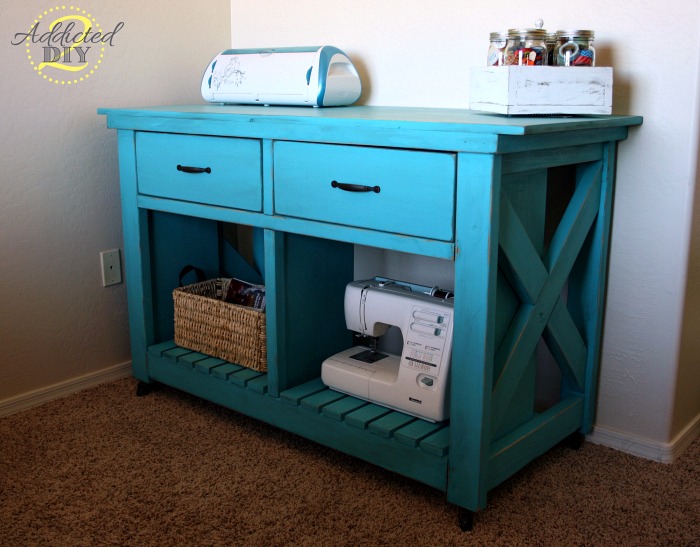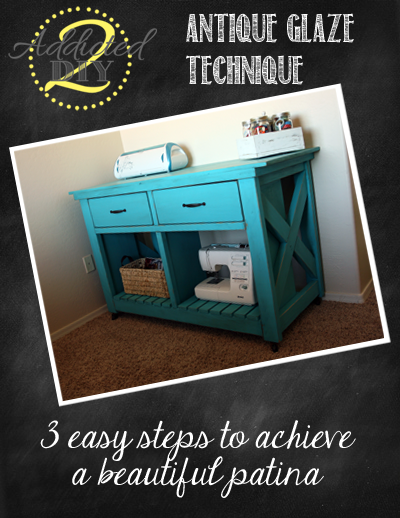Hi everyone! Today I’m going to show you how I did the glazing on my craft cart. I have to admit that I was extremely nervous about glazing it. This was my first time glazing and I didn’t want the hours I’d spent painting my craft cart to be ruined. It turns out that glazing is really easy and I’ll show you how I did it and got the patina I had envisioned in my finished product! All you have to do is distress you piece, brush it on, and wipe it off!
I chose to use Valspar Antiquing Glaze from Lowes. You can make your own glaze using a glazing medium and stain, but I took the easiest route and just bought a bottle of this stuff. This little bottle wasn’t cheap. I bought it a few months ago, but I want to say it was around $15. Don’t let that price scare you off though. I didn’t even use half of the bottle doing this entire piece.
Antiquing glaze is a great product because it gets into the nooks and crannies of the piece you are glazing and gives it dimension, texture, and a beautiful patina. Since this craft cart doesn’t have any intricate carving, or routered edges, I sanded the corners a bit to expose the bare wood.
I used my detail sander as well as my orbital sander to get the distressing I was looking for. You can sand by hand, but I was impatient and it was just easier to grab the power tools.
Here’s what it looks like before I started glazing. I took my air hose and blew off any residual sawdust and then got to work!

After brushing on the glaze, I would wait about 15 to 30 seconds and then wipe it off with a damp cloth. You can use a dry cloth to get a darker finish, but I was going for a more subtle look. If you do use a dry cloth, you have to wipe it off pretty quickly before it starts to dry.
Here’s how it looked after the glaze was wiped off. I liked this amount of color, but if you want to go darker, you can always reapply the glaze and wait a bit longer. I did that in a few areas where I wiped a little too hard.
I found that enough glaze built up on the rag that I was using that I could just use the rag to wipe some of the residual glaze onto the larger expanses of wood. It gave me just enough color that I was happy with it. Once your rag gets too saturated with the glaze, just rinse it and wring the water out really well.
And here is the final result! I am so happy that it turned out exactly how I had pictured it in my head. I hope that this tutorial will give you the courage to give glazing a try. I was shocked at how quick and easy it was and I can’t wait to glaze some other projects. I’ll be sure to share those projects with you as well!
~Katie





Leave a Reply